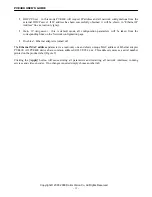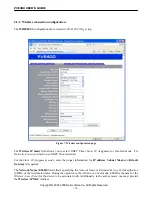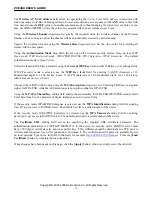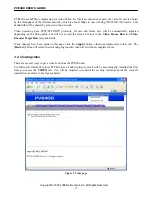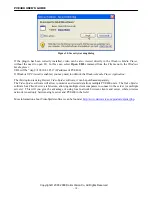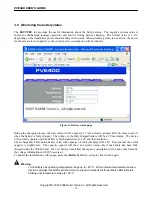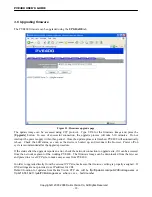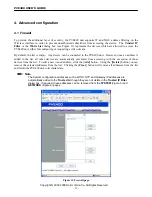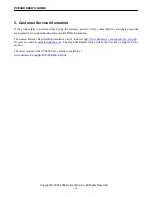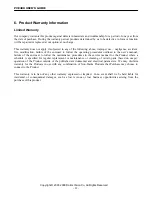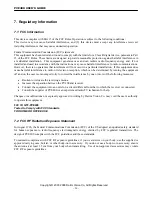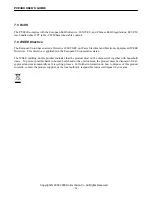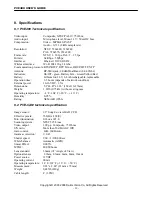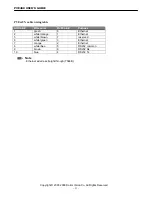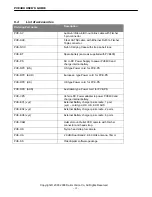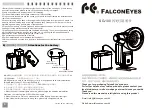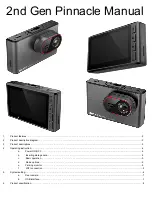
PVE400 USER’S GUIDE
7. Regulatory Information
7.1 FCC Information
This device complies with Part 15 of the FCC Rules. Operation is subject to the following conditions:
This device may not cause harmful interference, and (2) this device must accept any interference received,
including interference that may cause undesired operation.
Federal Communication Commission (FCC) statement:
This equipment has been tested and found to comply with the limits for a Class B digital device, pursuant to Part
15 of the FCC Rules. These limits are designed to provide reasonable protection against harmful interference in
a residential installation. This equipment generates uses and can radiate radio frequency energy and, if not
installed and used in accordance with the instructions, may cause harmful interference to radio communications.
However, there is no guarantee that interference will not occur in a particular installation. If this equipment does
cause harmful interference to radio or television reception, which can be determined by turning the equipment
off and on, the user is encouraged to try to correct the interference by one or more of the following measures:
•
Reorient or relocate the receiving antenna.
•
Increase the separation between the PV400 and receiver.
•
Connect the equipment into an outlet on a circuit different from that to which the receiver is connected.
•
Consult the supplier of PVE400 or an experienced radio/TV technician for help.
Changes or modifications not expressly approved in writing by Darim Vision Co. may void the user's authority
to operate this equipment.
FCC ID: QTF-PVE400
Tested to Comply with FCC Standards
FOR HOME OR OFFICE USE
7.2 FCC RF Radiation Exposure Statement
In August 1996, the Federal Communications Commission (FCC) of the US adopted an updated safety standard
for human exposure to radio frequency electromagnetic energy emitted by FCC regulated transmitters. The
design of PVE400 complies with the FCC guidelines and those standards.
To maintain compliance with FCC RF exposure guidelines, if you wear device on your body, use the supplied or
approved carrying case, holster, or other body-worn accessory. If you do not use a body-worn accessory, ensure
the antenna is at least 1.5 cm from your body when transmitting. Use of non-approved accessories may violate
FCC RF exposure guidelines.
Copyright © 2007-2008 Darim Vision Co, All Rights Reserved
- 26 -


